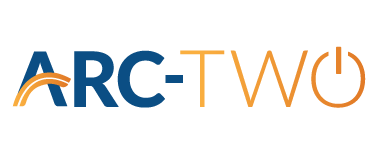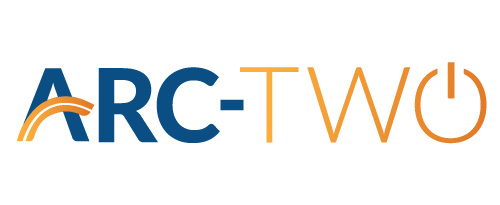
Month-End Best Practices for Fixed Assets
The month-end close is a critical component in the accounting cycle, particularly for a fixed asset accounting department. It’s essential for maintaining accurate financial records and ensuring compliance with tax and regulatory standards. A well-executed month-end close allows for streamlined financial reporting, confidence in one’s numbers, and better long-term planning. Below, we outline key best practices that can enhance the efficiency and accuracy of your fixed asset accounting group’s monthly closeout.
Standardize and Document Processes
Establish a Clear Workflow
A standardized workflow helps eliminate confusion and streamlines operations. By documenting processes, each team member can follow a consistent procedure, reducing the chance of errors or omissions.
Create a Detailed Checklist
A month-end checklist can serve as a valuable tool, listing all tasks and deadlines associated with closing the books each month. Items on the checklist may include things that routinely happen each month without fail, such as reviewing calculation results, or looking out for less frequent events, like changes to application switches or configuration settings. A consistent checklist approach ensures no critical steps are overlooked and allows team members to track progress and estimate time to completion.
Arctek (by Arc-Two) was engineered with these elements in mind. Users have the ability to configure month-end “steps” for groups of entities and cadences of their choosing, with full visibility to any collection of observers. To-Do’s (recurring and one-off’s) can be queued and reminders sent whenever desired.
Leverage Effective Software
Utilize Specialized Software
Asset accounting software solutions, such as Arc-Two’s Arctek, simplifies month-end close tasks by reducing manual work, expediting processing time, and ensuring accuracy through transparent calculations and reports. With less time waiting for results and more time for meaningful analysis, accountants can focus on more strategic tasks during critical close windows.
Ensure Transparent Data and Calculations
Fixed asset accounting software should provide full transparency for all calculations. Each calculated result should be clearly documented, with detailed explanations of the data and methods used, enhancing data integrity and auditability. Transparent calculations also make it easier for newer team members to learn and follow processes, reducing dependency on more experienced personnel.
Integrate with Other Systems
Integrating fixed asset solutions with broader ERP or financial systems streamlines data flow across departments, reducing the need for manual data entry and improving overall data consistency. For instance, up-to-date data transfers from work or project management systems directly into fixed asset registers enhances accuracy and allows for more comprehensive tie-outs and reconciliations.
Perform a Mock Close
Dedicate a Landscape
If resources allow, it can be invaluable to maintain a non-production instance of your asset management system refreshed as close to the end of the month as possible. In this environment, you can run things like ARO settlements and accretion, depreciation and amortization, cost allocations, AFUDC, and closings to plant-in-service where the results may be hard to reverse in production. Work with your IT department to determine if any environments are not actively being used for other testing purposes and use those environments where possible. Or discuss with those same teams the cost of adding a new landscape.
Anticipate Activity Between Mock and Production Close
At the end of the month, it’s common for there to be a surge in financial activity as projects wrap. Does your property accounting team have a feel for the volume or materiality of the activity encountered during the last day or two of the month? Does this happen consistently? Often performing even mock closes like above can account for only a part of the overall impact for the accounting period. Do your current software tools handle higher volume with enough speed or efficiency when these events occur?
Work Ahead
It’s not uncommon for property accounting groups to conduct activity during critical close periods that could have been executed earlier in the month. At times, a software product may present activities in a way that users infer these activities can only be run after others, when, in fact, many can be run repetitively, as frequently as desired. Below are some examples of activities that may enhance close speed and efficiency if activity is front-loaded earlier in the month:
- Individual project in-servicing/closing
- Book Depreciation Calculations
- ARO Accretion/Settlement Calculations
- AFUDC/Capitalized Interest Calculations
- Asset Retirements
- Asset Transfers and Adjustments
- Book Reserve Transfers and Adjustments
- CWIP/RWIP Split Re-Alignment
Keep Tabs on Your Inputs
Often new configuration, new data elements, or changes to existing settings can impact how things turn out for the current period. Were any new companies or collections of assets added to the ledger this month? When was the last time something like this happened? How can we control who has access to application settings, and when changed, who is notified? Has this control been changed before? Were new cost types created this month? Were depreciation rates changed? Knowing about all these changes well ahead of time can help to anticipate the impact of these changes (if applicable).
Reflect Back
- How did the last few month-end closes go?
- Are problems encountered repetitively, and can they be addressed more efficiently going forward?
Having a plan for speed bumps can help keep stakeholders in the loop and set expectations for resolution timelines. If the goal is to continuously cut down on close-time windows, having a debrief to review prior closes for timeframes can be useful.
Conduct Thorough Reconciliations
Reconciliations allow resources to confirm that data is present in the appropriate locations and have the values that are expected. When complex mathematical or multi-level transfers take place, it’s often helpful to break down these processes into auditable, consistent checks to ensure everything is working as it should. Making sure to use appropriate tools to perform these checks, at various levels of detail, and as fast as possible should be the goal of any asset accounting team. Performing these checks at a frequent and regular cadence is also important.
Ideally, an asset management software product should allow users to easily reconcile without needing to use secondary licensed tools. The creators of Arctek recognized that traceability and in-depth analysis are challenges encountered in the fixed asset space and have worked to incorporate as much supporting evidence as possible for the results that ultimately impact the company’s financials and reporting.
Integrate Communication
Software platforms like Arctek provide shared access to asset data across departments, reducing delays caused by information silos. Users across different departments can access real-time data, enabling smoother collaboration without the need for multiple email chains or meetings. This shared solution can accelerate decision-making and reduce miscommunications during the close period.
Invest in Continuous Training and Knowledge Sharing
Ensure Ongoing Training and Skill Development
Month-end closes can be complex, especially in fixed asset accounting, where changes in asset value, tax implications, and compliance requirements must be managed effectively. Regular training sessions help accountants stay updated on best practices and software capabilities, making the closing period shorter and more accurate.
Encouraging Knowledge Sharing
Knowledge sharing across team members prevents over-reliance on a few key individuals. If one person is absent or leaves the organization, others can step in confidently. Modern asset accounting software can help teams maintain continuity in knowledge and skills.
In conclusion, a well-structured month-end close process is essential to effective fixed asset management. By incorporating workflows/checklists, automating key processes, anticipating recurring events, fostering collaboration, and using the best software solutions available, fixed asset accounting departments can streamline their close periods, reduce errors, and provide valuable insights for strategic decision-making in the near and long-term.


